We Can Not Determine Your Eligibility at This Time
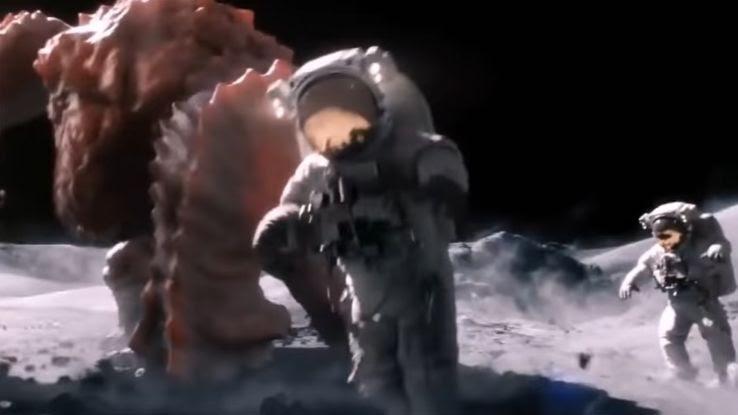
Affective commercials get into't just sell us a great product; they also assure a fib. People buy with their emotions before their system of logic, which makes advertisements that play on feelings so effective.
These are the most iconic commercials, the ones that suffer stayed in viewers minds years Beaver State even decades after the fact due to their memorable stories, controversial statements or hilarious jokes. Which one of these products would you buy up founded on the commercial?
Jean Cauvin Klein: "Fixation" (1986)
The set of this commercial for Obsession perfume looks like an Escher painting because of its fatal and white color scheme and multiple staircases. With its vehemence on flowers and sleek, sophisticated shapes, it was easy to see Obsession was about to be a worldwide, well, obsession.
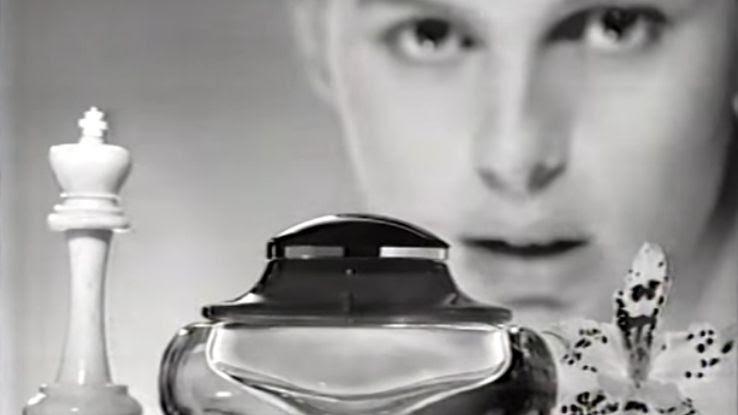
This highly conventionalized art house film was unreal, exotic and ready-made an impression, non only for its direction, but also because it made zero sense. Who knew confusing your consumers could lead to millions of dollars in revenue?
George Orwell's original 1984 is a staple of pop culture, so IT's not amazing that person tried to use it in a commercial in the titular year. In this Super Bowl inferior, Apple states that its technology can remove you from the atomic number 26 clutches of Grownup Brother and lead you to exemption.
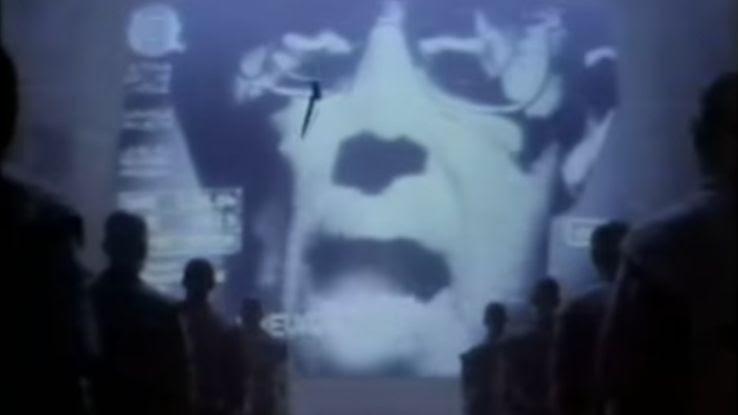
Orchard apple tree's "1984" is credited for fashioning Superior Bowl commercials a thing in the first place and South Korean won many awards, including a Clio Award. Adver Age named it the number one Super Bowl commercialized of all time — an impressive effort, considering it's one of the firsts.
Coca-Cola: "Hey Kid, Catch!" (1979)
In this commercial from 1979, Signify Joe Green shotguns a Coke given to him by a formative fan after a game. As a thank you, Green tosses his jersey and spouts the famous argumentation, "Hey tike, see!" which has been parodied and referenced ever since.
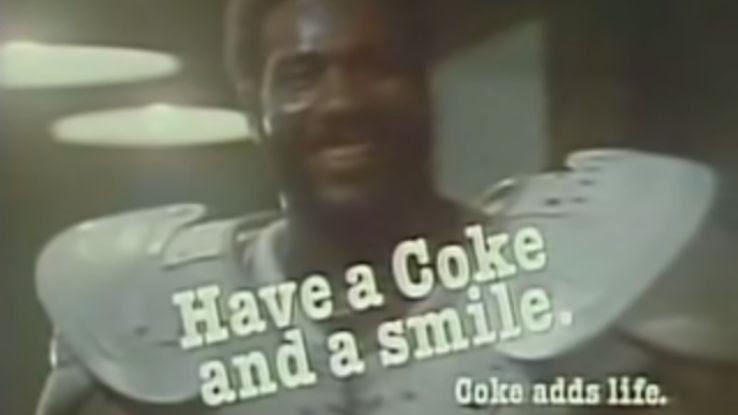
Not only did it win a Clio laurels, but it also inspired a 1981 made-for-tv motion-picture show, The Steeler and the Pittsburgh Kid. Furthermore, African-Americans were still a rarity in commercials at the time, and the success of the anno Domini further showed the importance of portraying them in media.
Metro Trains: "Unarticulate Shipway to Give out" (2012)
This animated Australian condom campaign was studied to promote child safety. Its cartoon characters told children how to avoid danger around trains specifically, but besides featured electrocution, gastrointestinal disorder and fire.
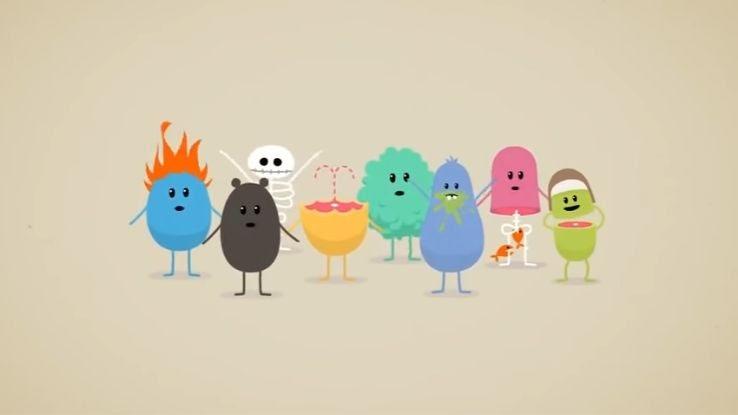
The campaign became the most awarded military campaign in history at the Cannes Lions International Film Festival of Creative thinking and led to multiple spin-offs, including a mechanised game, children's books and toys. IT's likewise credited with up safety device approximately trains in Australia, reduction the number of "near-fille" accidents by more than 30 per centum.
PSA: "This Is Your Brain on Drugs" (1997)
"This is your brain. This is your brain on drugs. Whatever questions?" This difficult-enjoy PSA was without doubt scary for children but was unforgettable in delivering its anti-drug rhetoric. The campaign was so popular and quotable that another push was launched that featured the actress slamming the sauteing pan off into dishes and other breakable objects.
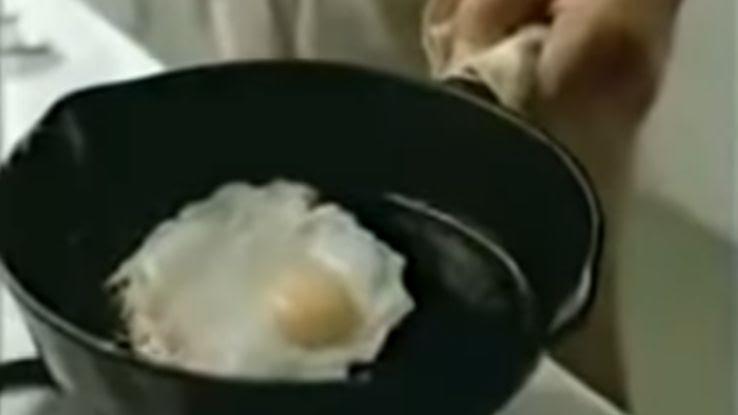
Multiple PSAs were made in the '80s to warn children of the dangers of drugs, but the sizzling eggs on the pan is the most iconic. Given, whether it was effective in preventing do drugs use may be a different matter.
Monster.com: "When I Grow Up … " (1999)
Sometimes, an effective ad military campaign is a parody of less prosperous commercials. "When I Grow Finished…" was on the nose that, a parody of aspirational commercials that told children to reach for the Sun Myung Moon and stars. Where strange ads came crossways as too idealistic to believe, this one didn't take itself too seriously.
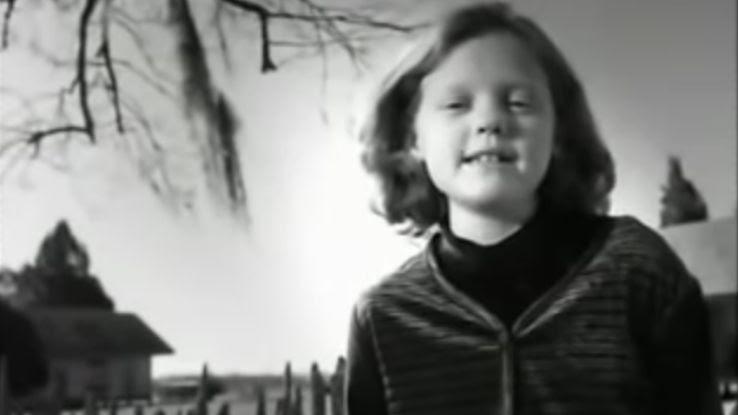
Monster's motivating ad is rum and freakish, and long, IT doubled the monthly viewers on the occupation site from 1.5 to 2.5 million. Information technology also South Korean won multiple industry awards for its message.
IAMS: "A Boy and His Dog Duck's egg" (2015)
America loves coming aged stories, particularly easily digestible ones. This commercial told the story of a boy and his dog Duck, who both rise old together as the viewer learns why the dog received his unique name. Mollycoddler: Duck is how the boy pronounced the name "Duke" when he was a banter.
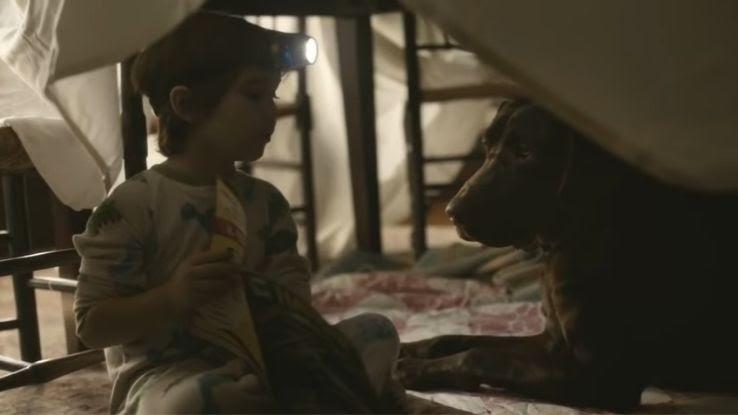
Yes, IT's emotionally manipulative. Yes, IAMS isn't a particularly incomparable dog food brand, and yes, umpteen viewers probably knew what the ad was doing, but people cried anyway. It's not each day that a commercial message breaks your heart like this.
Spear carrier: "Origami" (2013)
Why is a gum commercial trying to make you cry? A good deal like the old commercial, this one uses the account of a parent-child human relationship and origami wrappers to order a sweet story. The girl places complete the origami swans they've made together in a shoebox and takes them off to college. It's hard not to create an sonic "Aww" when you see it.
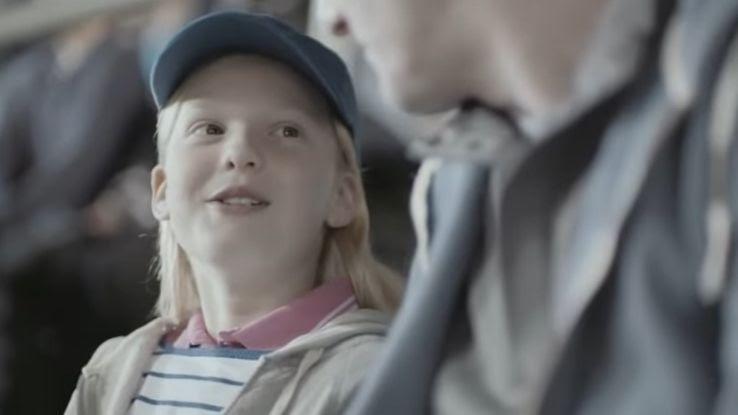
This "time-flies" mercenary is about enjoying the little things spell protrusive together done hardships. Kind of like how gum sticks to the bottom of a desk, although that probably wasn't the comparison they were going away for.
Casper: "Bottom't Sleep?" (2017)
Mattress company Casper decided to make an dissentient ad aimed at a core character of its consumer base: insomniacs. The dealing itself is just a 15-2nd snippet of reposeful imagery and the identification number for a hotline along with the row, "Can't sleep?" It aired at 2 am.

If you answer decide to birdsong the issue, an automatic voice reads off a list of relaxing sounds and sleep-inducingly boring recordings you can hear to. Unless you stay on the line to hear what number nine is, you won't even jazz that Casper is behind the line. It's surely an unforgettable come nea.
John John L. Lewis: "The Bear and the Hare" (2013)
Are you from the UK? If you are, you've without doubt seen the time period John Lewis &ere; Partners Christmas advertisements for the department depot of the same name. 2013's transaction was particularly notable. It told the moving floor of a bear who receives an alarm clock for hibernation from his friend, the rabbit.
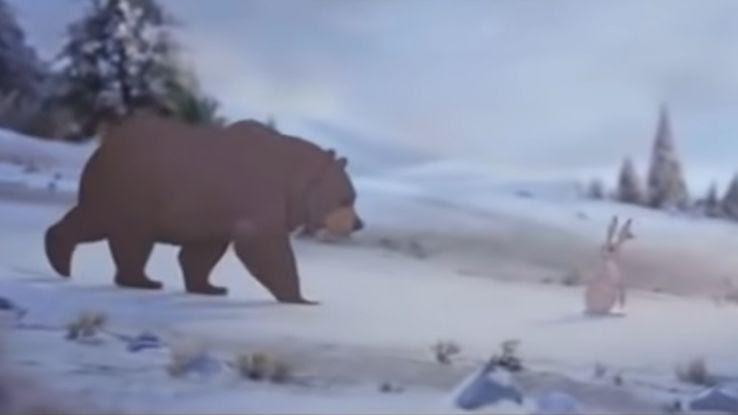
The animated commercial was set to a Lily Gracie cover of Keane's "Somewhere Only We Know" beautifully compliments this two-minute advert, and Walt Disney veterans came together to complete this masterpiece. It won aggregate awards and also boosted alarm clock sales by 55 percent.
Chipotle: "Back to the Start" (2011)
This heartwarming stopover-motion Chipotle campaign followed two farmers who moved to a more property farm, and it was insanely touristy in 2011. Information technology featured a moving cover of Coldplay's song "The Man of science" by Willie Lord Nelson.
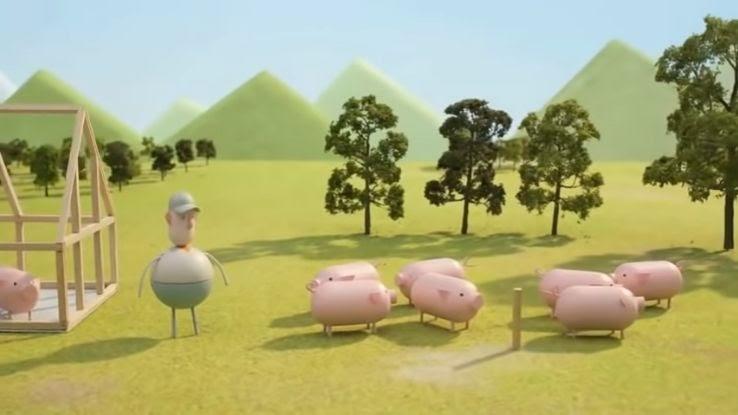
The campaign picked raised a destiny of steam in the early 2012s after airing during the Grammy Awards. To Chris Martin's chagrin, many viewers and critics thought the end-motion commercial gave a better carrying out than Coldplay that night.
John West Salmon: "Bear" (2000)
In this mockumentary commercial or so a take over sportfishing, a guy shows up and kung-fu fights the accept so he can steal his Salmon. A scene that could live stolen from National Geographic turns into Fight Order in seconds.
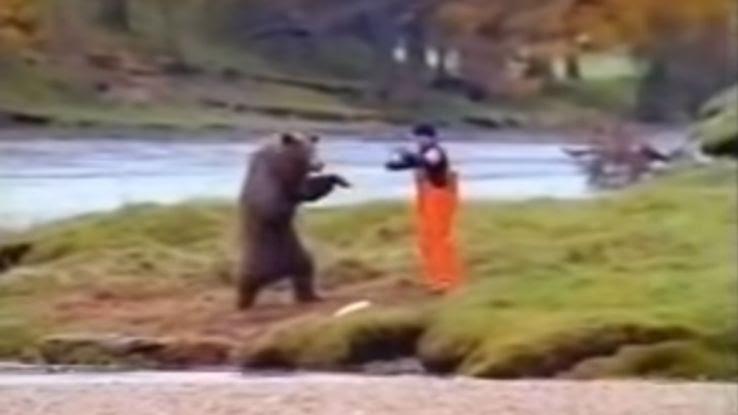
"Bears" won awards for its well-timed comedy and quickly became a viral sensation, receiving over 300 million views. It was as wel voted the Funniest Ad of Every Sentence in Campaign Elastic's 2008 viewers poll.
Old Spice: "The Man Your Man Could Olfactory perception Like" (2010)
Old Spice wasn't a fellowship that preferred funny commercials over serious selling at first, just that all changed in the 2010s. Isaiah Mustafa delivered kept audiences happy from start to finish and successful the phrase, "I'm happening a horse," a joke all on its own.
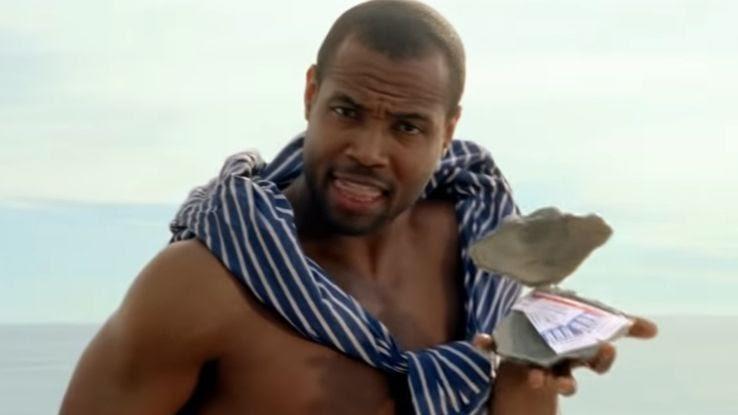
The technical won a slew of awards, and after receiving over 55 million views happening YouTube, Old Spice decided to gain even more ads using the one premise, thereby openhanded birth to the Old Spice Guy and a grand memes.
Keep open USA Beautiful: "Crying Aboriginal" (1971)
This commercial depicting a Native American crying ended the befoulment of his land was nonpareil of the most successful campaigns run by Keep America Aesthetical, a nonprofit that advocates for bedding material removal along highways. The commercial has become a hallmark of 70s environmentalism.
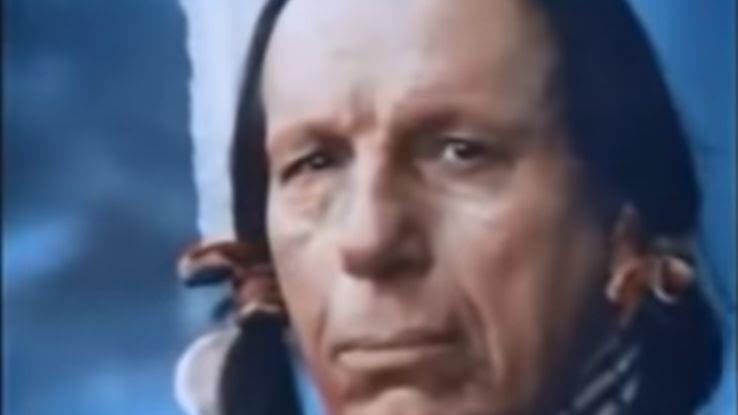
Fun fact: While Iron Eyes Cody, the actor who played the Indian chieftain, claimed to be Cherokee, his family line same otherwise, and he was confirmed after destruction to really personify Sicilian. His give birth key out was Espera Academy Award de Corti. He as wel needed to wear a lifetime preserver under his buckskins when He was canoeing on the river because he couldn't swim.
Mentos: "The Freshmaker" (1992)
This advertizing for Mentos candy combined a Euro-pop doggerel verse with corny acting and the beauty that was 90s style. It wasn't effective at first, but information technology did give visibility to a candy that wasn't known in the US until this ad press.
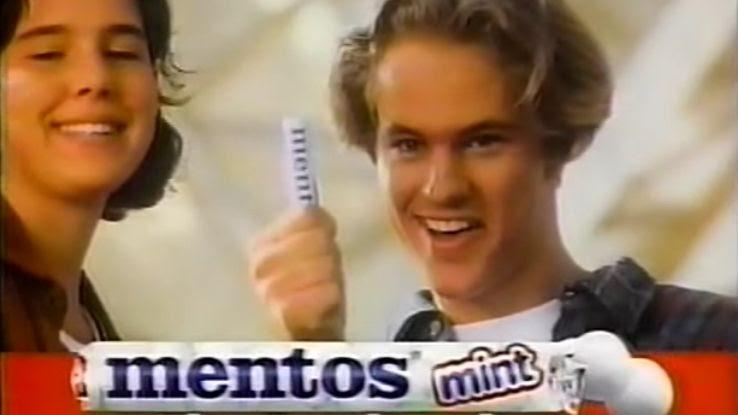
Gen-Xers love the catchy jingle, and so did the Foo Fighters. The music video for their single "Big Me" parodied the ad and won an MTV Picture Music Award for its afflict. The director of the video, Jesse Peretz, called the original commercial "number lobotomized felicity."
Nike: "Hang Time" (1989)
If you've ever thrown a sheet of rolled-up paper in the trash while yelling, "Money!," you have "Hang Clock time" to thank for that. Director Spike Lee and Michael Jordan collaborated to ridicule of the traditional "hero athlete" look-alike to create a series of humourous commercials.
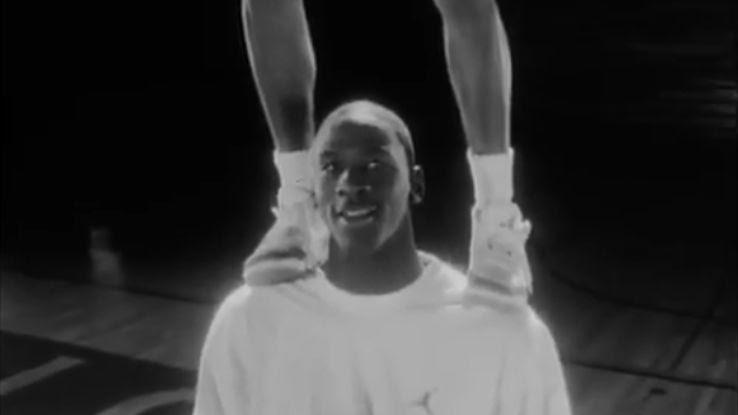
Spike Lee appeared in the commercials as motormouth Mars Blackmon. This 10-part series made Air Jordans a household name and popularized multiple befool terms and jokes. Michael Jordan has appeared in hundreds of commercials overall, including his infamous McDonalds' appearance, but this one is his best.
Wendy's "Where's The Beef?" (1984)
Wendy's, Warren Earl Burger King and McDonald's are immediate-food rivals to end entirely fast-food rivals. While the prototypical of the three has often lagged behind its rival, the catchphrase, "Where's the Beef?" from a Wendy's Fantastic Bowl commercial helped it catch up a bit by draft tending to the lack of boeuf in its rivals' burgers. The phrase has subsequently derive to mean calling the substance of something into question.
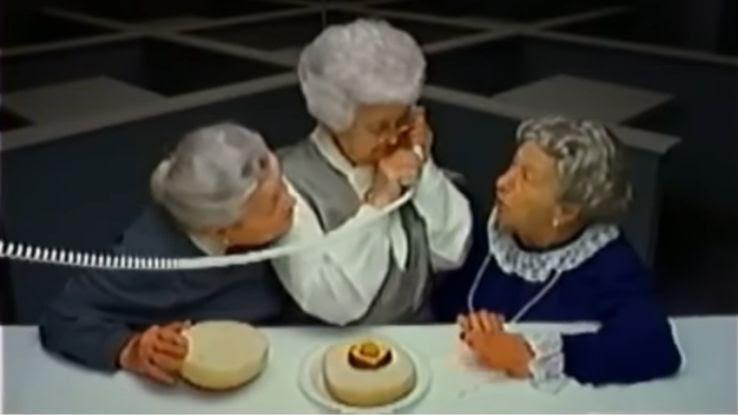
The ad blitz helped boost Wendy's revenue by 31 percent that year and was used in Vice Chairperson Walter Mondale's presidential campaign. Not lone did the hunting expedition sell more meat, but it too redux Mondale's tired campaign. Discourse two birds with one stone.
Budweiser: "Wassup?!" (1999)
Beer commercials are substantially known for victimisation beautiful women in their ads, which ready-made Budweiser's "Wassup" commercial entirely the more unique. It showed guys just hanging out,, and it successful the beer a subtle element in the commercial message itself. This Super Sports stadium ad created a new genre of commercials that used entertainment to sell a product.
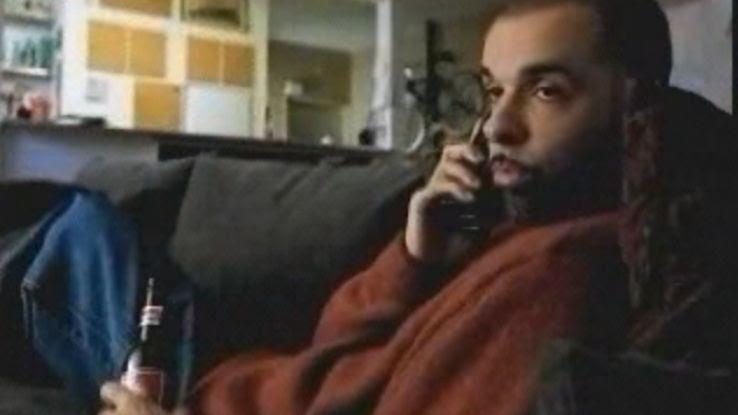
"Wassup" became a worldwide phenomenon and was subsequently parodied passim the early 2000s, including through an entire fit in Scary Flic. This Budweiser campaign is still popular to this day, with Burger King creating a variation of its personal in 2018.
IKEA: "Dinning Room" (1994)
In 1994, IKEA launched a trilogy of ads focusing on different families buying dining-room piece of furniture, including a married man and wife, a grass widow and a gay couple. The spiritual right protested ad featuring gay men, just IKEA didn't back down.
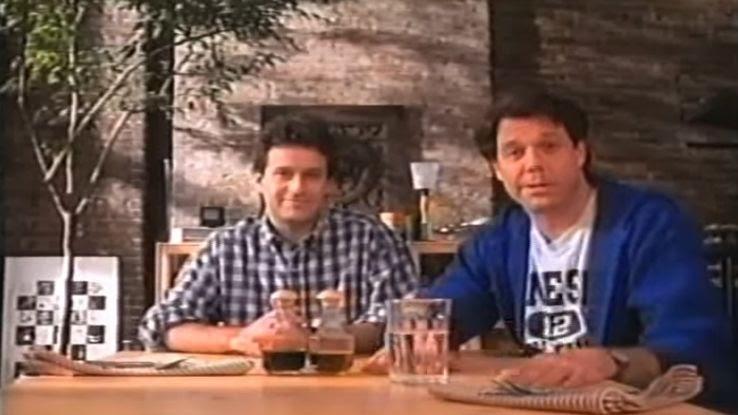
The Scandinavian country furniture company argued that the moneymaking wasn't a persuasion argument. They simply loved to portray modern Americans in complete their contrastive kinship status. IKEA won major points with the LGBTQA community and their allies, leading to boosted gross sales.
Chanel No. 5: "Marilyn" (1994)
When Marilyn Monroe told an interviewer that she wore only Chanel No. 5 to bed, it ready-made the company millions of dollars. To capitalize on that success for a new generation, Chanel used a ruffle of acting and technology to morph Carole Bouquet in Marilyn James Monroe singing I Wanna Be Loved by You.
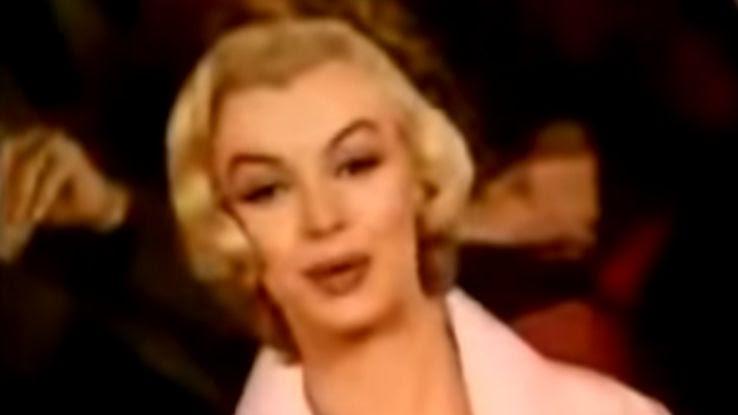
Chanel paid a pretty penny to use Monroe's likeness and song, but the money was worth it, as sales skyrocketed. Chanel No more. 5 is still the pinch-selling perfume for the company, and it's in break u because of the cultural cachet the ad gave the film days agone.
TRIX: "Trix Are for Kids" (1959)
"Silly lapin, Trix are for kids!" says a plucky young girl after outsmarting an animated rabbit. That lapin has been on a quest for the fruity goodness of Trix for decades now, but to this day, he hasn't had a seize with teeth.
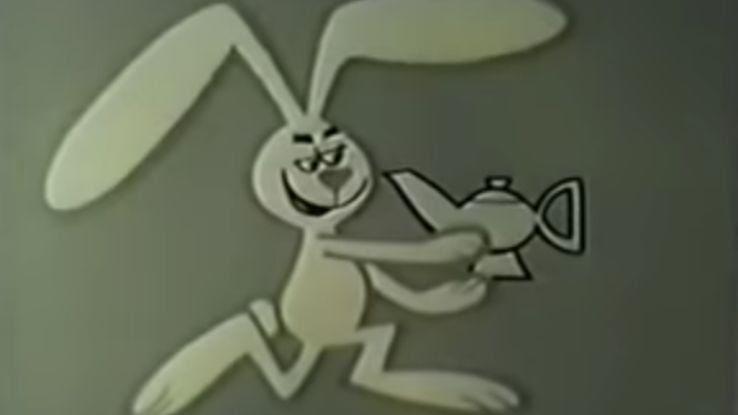
The ad campaign was so touristed that 50 years later, mass are still expression the catchphrase to head off people from their food. While gross revenue for the food grain are down as of late, the brand still managed to milk years of success from a single adver.
MEOW Intermixture: "Singing Chuck" (1972)
The classic Meow Mix song is a tally today, but information technology was actually the termination of an fortuity. While filming a cat eating for economic consumption in a commercial, the cat in question began to choke on its food. While the cat was precise, the footage was useless — until soul definite to take a snipping of the video and use it to create the notable lip-synced cat.
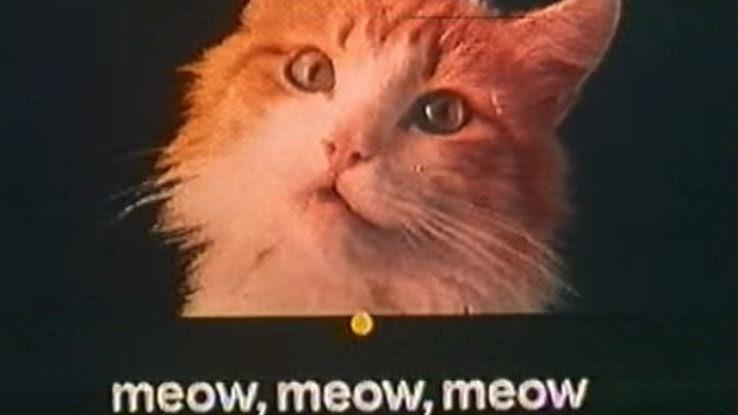
The spy the Meow Mix strain only cost around $3000, merely the company subsequently successful millions off of the funny commercial. It was so successful that the African tea was at length printed on bags of cat food.
Reebok: "Terry Tate, Office Line backer" (2003)
In this Super Bowl commercial message, Terry Tate destroys an office building and its faculty and gets mercenary for it. If you oasis't already watched this, you're in for a do by. The one-liners and outrageous doings truly earn this commercial a put down in the A.D. pantheon.
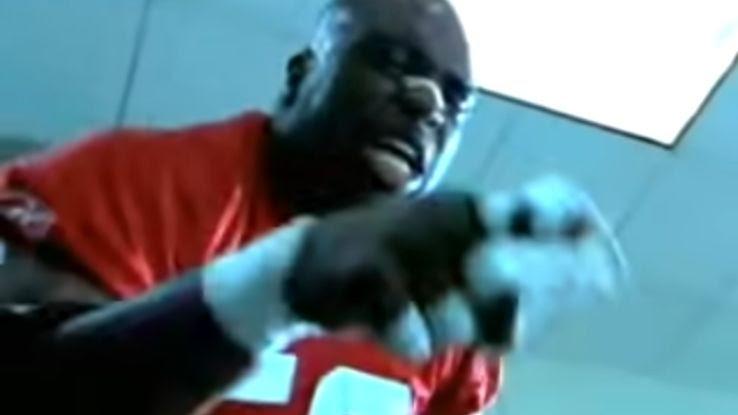
Although it was incredibly popular, only 55 percent of viewers polled remembered that the commercial had anything to do with Reebok. The company reported that gross sales still went up fourfold online, merely the ad nevertheless serves as a warning sign that not all winning ads take to higher sales.
Snickers: "Hungry Betty Clean" (2010)
Is Betty White ever so not funny? The solution is no. During the 2010 Super Bowl, the former Lucky Girl starred in the now famous "You're Not You When You're Starved," which spawned an entire serial publication of additional ads.
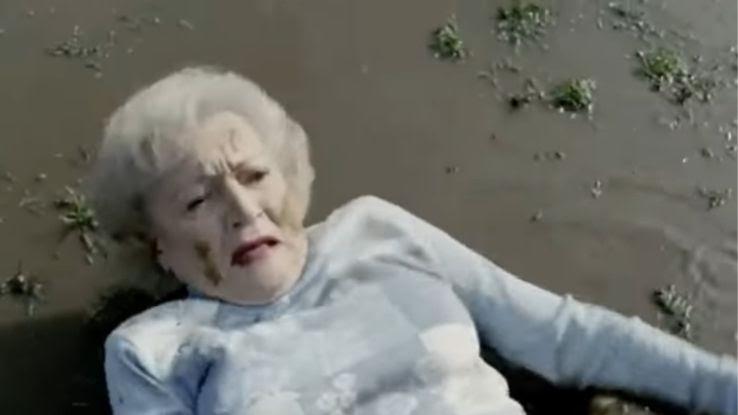
The ad won the night for best Super Bowl commercial and helped Snickers earn a summate of $376 million in ii years. It was also credited with revitalizing Betty Snowy's career, who appeared on Saturday Night Unfilmed and other leading roles presently afterwards.
Honda: "Theme" (2015)
This unique ad takes viewers through Honda's 60-year history. It starts with Soichiro Honda's idea of using a radio source to power his wife's vehicle and ends with a red Honda driving away in the desert. The paper setting makes the commercial feel nostalgic and personal.
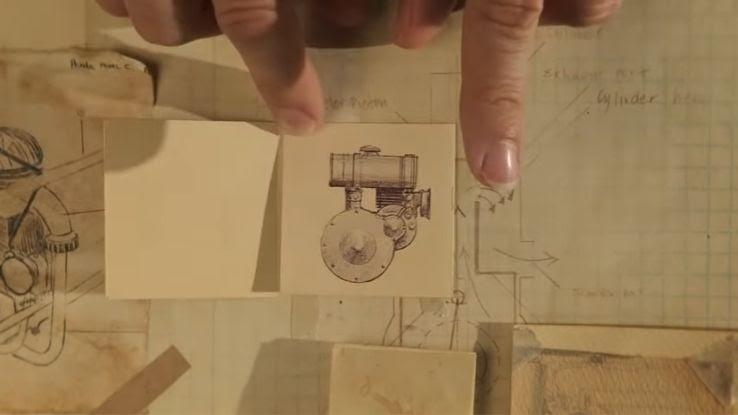
Honda ready-made such an impact on their target market that it won an Emmy Award. Created through Little Jo months of hand-drawn illustrations past dozens of animators, the wallpaper flipping and stop-motion techniques used in the commercial verified revolutionary.
E-Trade: "Potter" (2000)
Ad Age delineated this ad as "impossibly stupid, impossibly brilliant," and that's certainly non wrong. E-swap is an investment web site that helps the great unwashe defecate enlightened decisions about things like stock and bonds. The commercial shows a chimpanzee dancing in a garage and rim-synching "La Cucaracha."
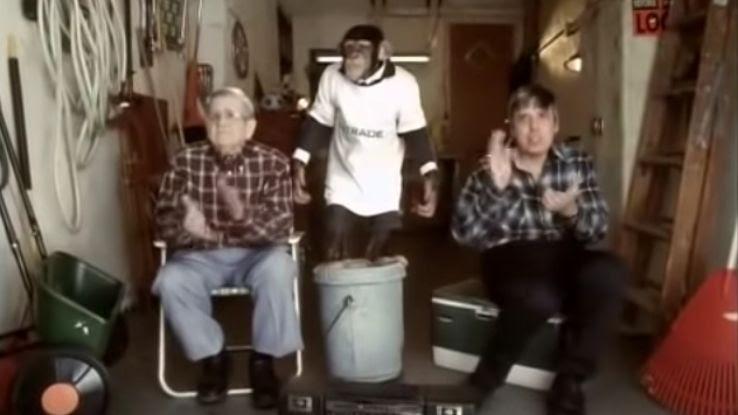
The off-rhythm, flannel-spiffed up seniors apparently paid $2 million for the privilege of spending clip with this prelate. E-Trade informs the watcher that there are better ways to spend hard-earned money, and they can facilitate.
Mountain Dew: "Puppy Monkey Baby" (2016)
"Pup Monkey Baby" features, unsurprisingly, a weird hybrid creature resembling a baby, monkey and pug. It was bizarre, and probably the get of more a child's nightmares, but information technology was a social media achiever. It generated 2.2 million online views and 300k social media interactions in one nighttime.
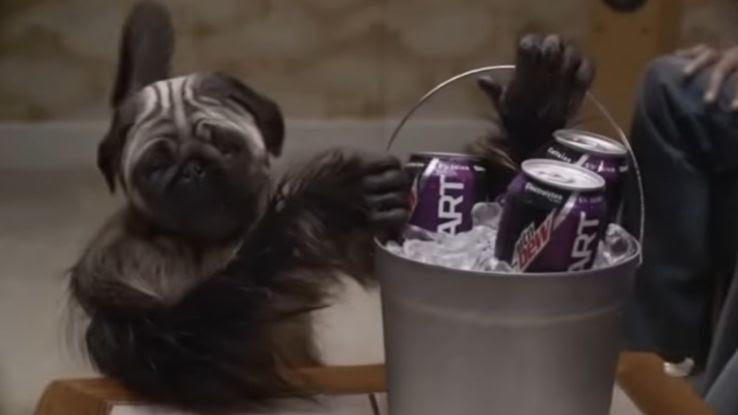
Wads Dew knew that confusion complete the sketch would draw aid, and they were right. Whether mass loved the Puppy Potter Baby or hated it, Mountain Dew was on their minds. This bizarre wight LED to millions in sales.
WATERisLIFE: "Kenya Pail List" (2013)
Thanks to adoption adverts from the 1960s, IT's good known that many rural parts of Kenya have poor drink water. In 2013, nonprofit WATERisLife created a military campaign that brought awareness to this fact over again. In point of fact, according to the ad, 1 in 5 children in Kenya won't hand over the age of five.
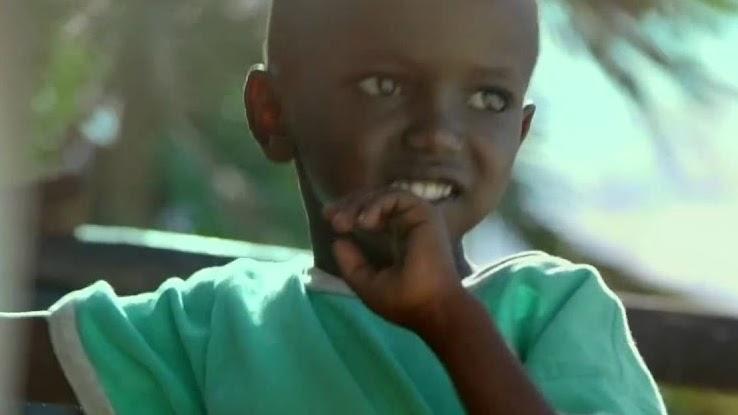
Two adorable 4-year-olds, Maasai and Nkaitole, go on an adventure to see everything they can "ahead they die." The advertizement pulled at the nation's heartstrings and started a Fats Domino effect of collective donations.
Volkswagen: "The Force" (2011)
Volkswagen's "The Pull up" is currently the most-watched Super Trough commercial ever. In the commercial, a tiny child dressed as Darth Vader tries to function the push in multiple ways. Atomic number 2 "successfully" uses it against a machine when his father on the QT activates it with a remote.
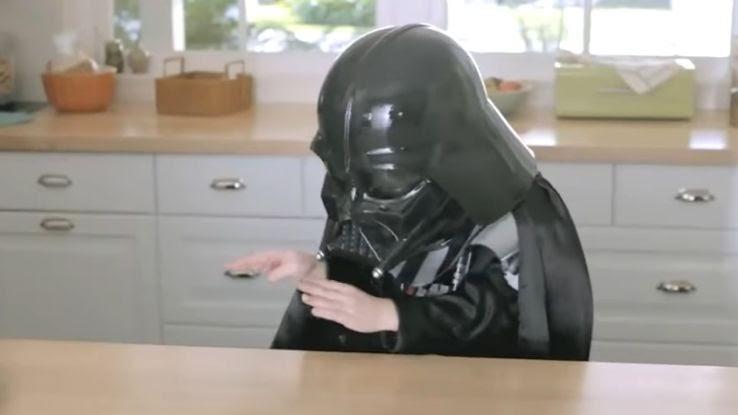
Volkswagen released the ad early on YouTube, where it gained 1 million views overnight, and 16 million much before the Super Bowl. It paid for itself before the anno Domini ever ran on television. Before this ad, it was unheard of for advertisements to work so effectively ahead their initial release.
Thai Life Policy: "Unsung Hero" (2014)
This Thai Lifespan Insurance commercial was massively popular because of how beautiful and touching its story was. It follows a gentleman's gentleman who likes to do nice things for people, but this "unsung Cuban sandwich" doesn't get whatsoever adoration for information technology — in the beginning.
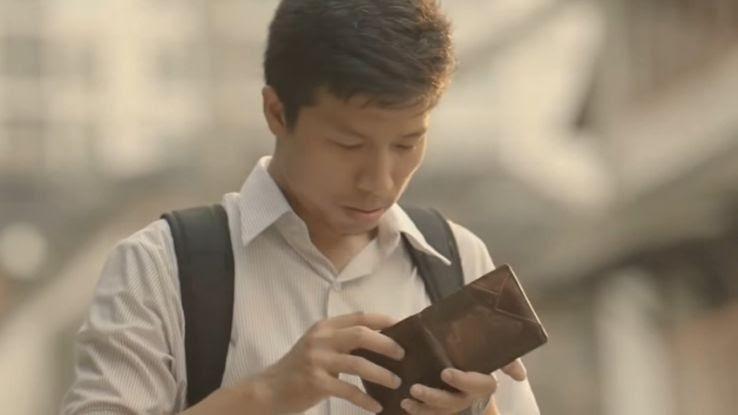
Apparently, ads that showcase a good cause and tug on the viewers' heartstrings are particularly effective in East Asiatic countries. Considering how nonclassical IT was in the Cohesive States, IT must have had an eventide better run in its indigene Thailand.
We Can Not Determine Your Eligibility at This Time
Source: https://www.ask.com/entertainment/most-important-commericals-all-time?utm_content=params%3Ao%3D740004%26ad%3DdirN%26qo%3DserpIndex
0 Response to "We Can Not Determine Your Eligibility at This Time"
Post a Comment